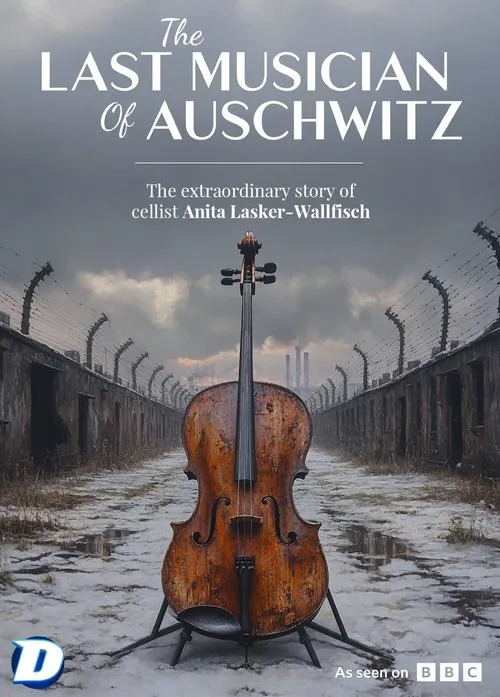The Last Musician of Auschwitz

Handlung
In 1942, the Nazi regime, led by Adolf Hitler, launched a campaign of persecution against Jews living in Nazi-occupied Europe. Among those swept up in this campaign was Anita Lasker, a 17-year-old German Jewish violinist with a natural talent and passion for music. Anita's journey, intertwined with that of her cellist sister, Eva, would take them to the infamous Auschwitz concentration camp, where they would face unimaginable hardships, yet find solace in the very thing the Nazis sought to destroy - music. As the Lasker family struggled to comprehend the unfolding horrors of the Holocaust, Anita and Eva found themselves on a train bound for Poland. Their destination, unknown to them at the time, was Auschwitz, a labyrinthine network of camps where millions of Jews, Romani people, and other perceived enemies of the Nazi regime would be tortured, experimented upon, and brutally murdered. Upon arrival, Anita and Eva were forcibly separated and sent to different camps, with Anita ending up in the women's camp at Auschwitz II-Birkenau. In the chaos and despair that followed, Anita's sister Eva became part of a clandestine orchestra that played to lift the spirits of fellow prisoners in the men's camp. Anita, too, discovered the orchestra's existence and longed to join her sister, but she was separated from Eva and had to navigate her own path. Desperate to maintain her connection to the world she once knew, Anita clung to her violin, and with a fierce determination, began playing it in secret. Meanwhile, the camp's orchestra, led by the enigmatic and fiercely passionate Romanian violinist, Alma Rose, continued to play on, even as the horrors of the concentration camp escalated around them. In a world where music was used as a tool of oppression, this group of prisoners, bound together by their art, created a defiant space for resistance and survival. Their music became a beacon of hope in the face of unimaginable suffering, a testament to the human spirit's capacity for resilience. As the months passed, Anita's connection to the orchestra grew stronger. She was drawn to their courage and conviction, and her own passion for music ignited a sense of purpose within her. With the help of fellow prisoners, including a young Polish girl named Fela Halberstadt, Anita's violin playing blossomed, and she became an integral part of the orchestra. Together, they played Chopin, Bach, and other treasured works, weaving a web of beauty and emotion that transcended even the most dire of circumstances. Their music became a vital lifeline, a reminder of the world beyond the barbed wire and watchtowers that loomed over the camp. In those moments of music, the prisoners forgot the horrors that had brought them there. They forgot the fear that gripped their hearts. They forgot their hunger and their exhaustion. All that mattered was the music, and the sense of belonging it gave them. The orchestra's existence was a defiant rebuke to the Nazi regime, a testament to the power of art to uplift and inspire. But even as they continued to create and play, the Lasker sisters and their fellow musicians faced unimaginable hardships. Disease, malnutrition, and brutal treatment were just a few of the many dangers that threatened their lives. The orchestra's very existence was a constant risk, for the Nazis saw music as a threat, a potential catalyst for rebellion. Yet, Anita, Eva, and the others refused to be silenced. Their courage and determination would ultimately save their lives. In 1945, as the Allies drew near and the Nazi's grip on Auschwitz faltered, Anita, Eva, and the others were among the thousands of prisoners who were evacuated from the camp in the final days of the war. Their liberation was a moment of joy and relief, but it was also bittersweet. The trauma they had endured would stay with them forever, a constant reminder of the atrocities they had survived. Years later, Anita Lasker-Wallfisch would return to the site of Auschwitz, now a museum dedicated to the memory of those who suffered and died there. She would play her violin, the instrument that had sustained her through the darkest of times, and remember the sister she had lost, the friends she had made, and the music that had kept them alive. Her story, and that of the orchestra, serves as a testament to the transformative power of music, a reminder that even in the most broken of worlds, beauty and hope can still be found.
Kritiken
Empfehlungen




